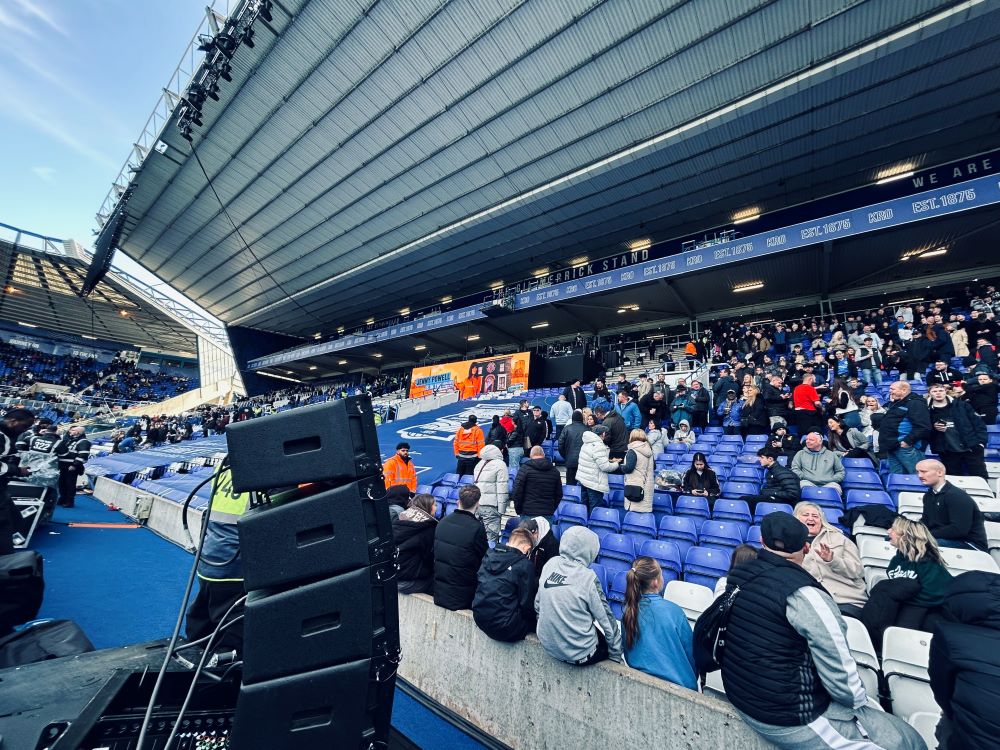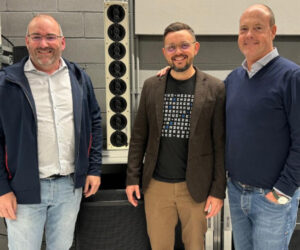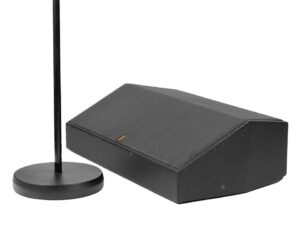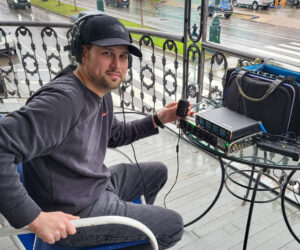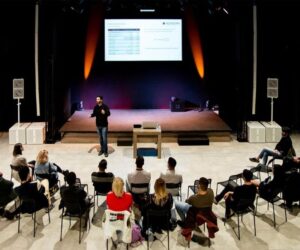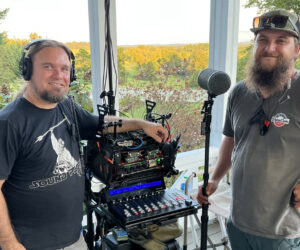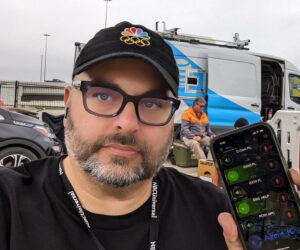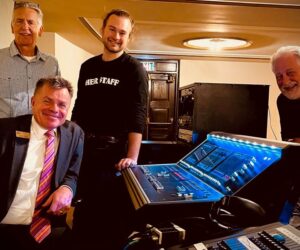Within 15 minutes of completing victory over Preston North End in a football match on Easter Monday, Birmingham City’s St. Andrews stadium was transformed into a rock concert venue by Martin Audio production partner 22live for a performance by English reggae and pop band UB40 (which originally formed in Birmingham.)
22live, led by Paul Timmins, had many challenges to overcome, not least where to site the 15 ground stacks of Martin Audio WPC and WPS line arrays as well as the speed of deployment to get the show underway as quickly as possible after the final whistle.
“I always wanted to do this really unique event with the Martin Audio option,” Timmins explains. “Over the years I’ve put out many perimeter pitch-side systems, delivered half-time shows, and presented playback gigs at sports events, but there has been nothing quite like this.”
The story begins when UB40 production manager Sean Busby-Little, having been approached by the football club about the proposed event, contacted 22live. “We’ve worked a lot together in the past, including military work in Afghanistan, so I’ve known Sean a long time,” continues Timmins. “The fact we were based locally helped, as with the odd timings there was always likely to be a lot of running around.” The fact that the date was suddenly brought forward 12 days from the originally scheduled April 13th date.
Two days of rehearsal of Digbeth helped new monitor engineer Harry Le Masurier settle in, while staging options were debated and the fact that 56 channels were required, choice of stage was paramount. After dismissing other options they decided to construct the staging in the “sterile” area — or empty block of seating — segregating the home and away fans in the Gil Merrick stand.
“The seats were removed, and the staging company built a two-tiered stage because of the raking set high up to avoid obscuring sightlines,” Timmins notes. “Although big LED screens and lighting were able to be flown from the roof, in view of weight loading, audio was always going to be a pitch side perimeter speaker system.”
He adds that because of distance variations, each stand required its own unique treatment: “The main stand is quite shallow and didn’t need as much power as the Kop side, so I chose WPS, four stacks high. On the Kop stand I used WPCs, four high because I needed more power. At the Tilton end I used WPC, three high, because I knew I could get away with less, with just two stacks WPS four high required on the Gil Merrick stage end — because coverage was only required on either side of the large center section.” Each stack was supported by an SXH218 subwoofer.
TORUS T1230 loudspeakers filled dead spots in corners between the Gil Merrick and the Kop stands, and further T1230s and an SX118 subwoofer provided reference sound at the front of house mix position, which was located underneath the stands.
Critical to the success of the optimization was tilt angles. 22live knew that since they would be raking the system back into the stands, rather than have it tip forwards as would be customary, they could dispense with the standard WP grids in favor of straps. After verifying this custom approach with Martin Audio, they deployed the approach, which would also ensure each stack could be put into place swiftly as a single self-contained unit.
Crew boss Glen Little worked closely with extra local crew, who were experienced in dealing with Martin Audio boxes. “The beauty with the weight of the Martin Audio system, was that with four people we could move each stack as a single block, keeping the bottom box strapped to the sub,” he says.
Unlike a typical average home gate of around 19,000 this event drew 25,000 (since there was no increase in ticket price). This double header a success as the best part of 20,000 returned from the bars within 15 minutes of the end of the match to be confronted by a different scenario, with DJ Jenny Powell leading into the band, which played an hour-long set.
Timmins concludes, “It was one of those days where everything worked. To have the PA rig built and deployed in just 12 minutes from the final whistle was remarkable.”
Other key personnel who contributed to the event’s success included experienced tour manager Yaron Levy, with Russ Tite mixing at front of house. Jason McAvoy was control tech, Rylan Machin and Ryan Bass were the two system techs on duty, while other techs were Chris Wilcock and Jack Davis.


